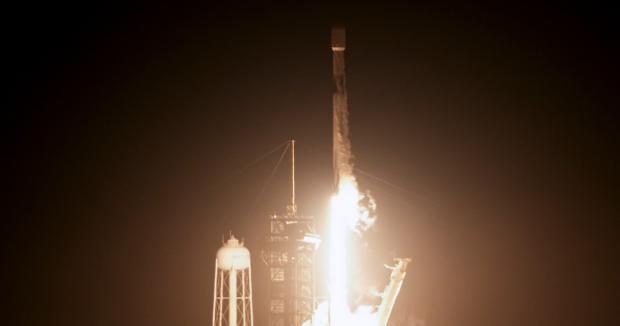
Breaking News
 'We Are Buying': Michael Saylor Confirms Strategy (MSTR) Is Aggressively Buying Bitcoin
'We Are Buying': Michael Saylor Confirms Strategy (MSTR) Is Aggressively Buying Bitcoin
 POLE SHIFT INCOMING, Earth's Magnetic Field WEAKENING Says NASA
POLE SHIFT INCOMING, Earth's Magnetic Field WEAKENING Says NASA
 Lee Zeldin: Jasmine Crockett's Epstein Claim, Trump Meets Mamdani + Cloud Seeding Is REAL! | PBD
Lee Zeldin: Jasmine Crockett's Epstein Claim, Trump Meets Mamdani + Cloud Seeding Is REAL! | PBD
 SHOCK VIDEOS: Fire Breaks Out in United Nations 'Climate Change' Conference COP30 in Brazil&
SHOCK VIDEOS: Fire Breaks Out in United Nations 'Climate Change' Conference COP30 in Brazil&
Top Tech News
 New Gel Regrows Dental Enamel–Which Humans Cannot Do–and Could Revolutionize Tooth Care
New Gel Regrows Dental Enamel–Which Humans Cannot Do–and Could Revolutionize Tooth Care
 Researchers want to drop lab grown brains into video games
Researchers want to drop lab grown brains into video games
 Scientists achieve breakthrough in Quantum satellite uplink
Scientists achieve breakthrough in Quantum satellite uplink
 Blue Origin New Glenn 2 Next Launch and How Many Launches in 2026 and 2027
Blue Origin New Glenn 2 Next Launch and How Many Launches in 2026 and 2027
 China's thorium reactor aims to fuse power and parity
China's thorium reactor aims to fuse power and parity
 Ancient way to create penicillin, a medicine from ancient era
Ancient way to create penicillin, a medicine from ancient era
 Goodbye, Cavities? Scientists Just Found a Way to Regrow Tooth Enamel
Goodbye, Cavities? Scientists Just Found a Way to Regrow Tooth Enamel
 Scientists Say They've Figured Out How to Transcribe Your Thoughts From an MRI Scan
Scientists Say They've Figured Out How to Transcribe Your Thoughts From an MRI Scan
 Calling Dr. Grok. Can AI Do Better than Your Primary Physician?
Calling Dr. Grok. Can AI Do Better than Your Primary Physician?
US makes second attempt at commercial Moon landing

Today's night launch took place during an instantaneous launch window after a 24-hour delay due to unusually high temperature in the methane fuel for the booster. When the countdown reached zero, the Intuitive Machines IM-1 mission carrying the Nova-C class Odysseus lifted off from the pad without incident. According to SpaceX, this was the 18th flight of the Falcon 9 1st stage booster.
At the one-minute 12-second mark, the rocket passed through Max Q, which is the point where the craft is under peak mechanical stress. Main engine cutoff came at two minutes 14 seconds, with the second stage separating three seconds later, followed by the second stage engine ignition 12 seconds after that. Meanwhile, the first stage began its maneuvers to take it back to the Kennedy Space Center for a powered landing.
When the fairing was jettisoned, a spring ejected the lander, which is now in an elliptical orbit around the Earth, and after commissioning of the spacecraft the methane/oxygen main engine will fire to send Odysseus into a translunar orbit. After arrival in lunar orbit, the lander is scheduled to touch down on the Moon on February 22 at Malapert A crater near the lunar south pole.
As part of NASA's Commercial Lunar Payload Services (CLPS), Odysseus is carrying out a number of the space agency's experiments, including a laser reflector array, a Doppler lidar for precise navigation, and a CubeSat that will be deployed before landing to act as a radio beacon. In addition, there are four commercial payloads.
According to Intuitive Machines, Odysseus is about the size of a Tardis, if you happen to have one handy for comparison. If you don't, it's about four meters (13 ft) tall and weighs about 1,908 kg (4,206 lb). It's solar powered, generating about 200 W, and is expected to operate on the lunar surface for one lunar day before the freezing dark of the lunar night renders it inoperative.

 Unbanked In A Connected World
Unbanked In A Connected World

